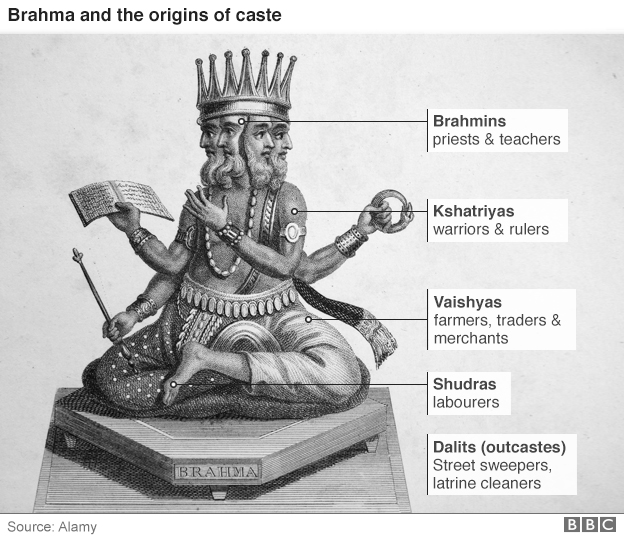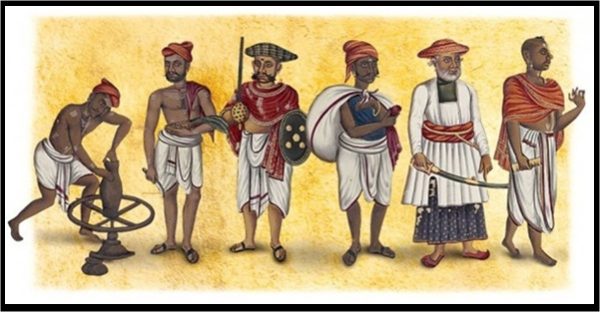The Indian Caste System dates back to before the birth of Christ and is believed to be an ancient form of hierarchy created and followed within society.
The Caste System was introduced to maintain social order within a society. It’s a concept that was implemented in the Hindu community. Many believe that the birth of the Caste System originates from the God of Creation in the Hindu mythology, Brahma.
 Photo Credits: BBC
Photo Credits: BBC
According to the caste system, Hindus are segregated into five categories: Brahmins, Kshatriyas, Vaishyas, Shudras, and Dalits.
Brahmins are considered the educators and priests, held in the highest regard by everyone in society. Next, come the Kshatriyas, the royals and the warrior class. Followed by the Vaishyas, the traders, businessmen and farmers. The fourth class is the Shudras, essentially the servants and labourers. Lastly, the Dalits- considered to be the untouchables in society.
Although viewed as an effective method to maintain order in society, it’s offensive how people of the lower castes were and are treated. Those who belong in the higher order of the social hierarchy believed that this was the best method to continue living a life that suited their lavish tastes and maintain a superior status quo. Upward social mobility was almost impossible in the caste system. You do not get to choose which caste to belong to, you’re born into it. One’s entire life is predetermined, with little to no luck to change or improve their station. Even if one wants to rise above this form of social confinement, others force them back down because they fear disrupting the system.
 Photo Credits: Medium
Photo Credits: Medium
Perhaps it was harder to break through the restraints of gilded communities a couple of decades ago, however, times have changed. The upper class has always enjoyed their privileges and frowned upon others in society, while the lower class worked hard to bear the unjust treatment that berated them, and provide for their families. Over the years, the caste system became more flexible, allowing people to move from one caste to another.
Nonetheless, there has always been one sanction of the society who were and are continued to be treated in an atrocious manner, the Dalits. They’re the outcasts of the system, the Untouchables. They have the lowest possible station and least amount of respect in society, that is if their harsh reality even allows them to have any. The cruelty of people and those who have faith in the caste system disregard the human rights and basic dignity of the Dalit community. Dalits are forced into poverty and reduced to working as garbage collectors, sweepers, drain cleaners, etc.
 Photo Credits: Ancient Origins
Photo Credits: Ancient Origins
The constitution of India abolished the Caste System in independent India, as an act to give everyone a chance at equality and correct the past mistakes of those in power. But as many say, old habits die hard. This form of social stratification was a binding foundation of dated communities that resided in India. Naturally, these beliefs were passed onto newer generations. Therefore, discarding the legality of this system, people continue to engage with its teachings. Of course, several reforms have been brought about in Indian society to fight for a better chance at equal social standing. However, it’s a slow work in progress.


